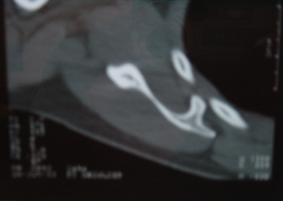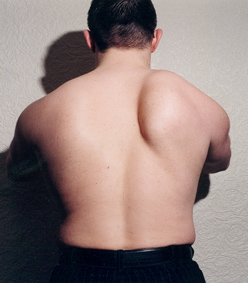Calcifying tendonitis Calcifying tendonitis is the collection of calcium in the tendons of the rotator cuff. The tendons, abnormally producing calcium deposits, cause this.
The calcium deposits cause pain in two ways. One way of producing pain is through the inflammation these deposits provoke in the surrounding tendon. The other way of producing pain is expanding the size of the tendon leading to Impingement .
This condition occurs in people between the ages of 30 & 50 years. The calcium deposits tend to get absorbed by the inflamed tendon and disappear over a period of 3 years or more.
Severe pain from the calcium deposit may be treated with an anti-inflammatory injection of a steroid above the tendon. Less severe pain, which is not resolving, may require keyhole surgery to remove the calcium deposit or subacromial decompression if impingement is a major factor.
Biceps tendonitis
The long head of biceps tendon is the part of the biceps muscle (the big muscle in the front of the upper arm) that attaches to the socket of the shoulder (glenoid), inside the shoulder joint.
Biceps tendonitis is an inflammation of the tendon inside and in front of the shoulder joint. This is normally associated with inflammation of the rotator cuff tendons and the process of impingement .
This condition is treated as part of the impingement & the rotator cuff problem. Occasionally damage and scarring to the tendon requires surgical stabilization of the tendon as well as correcting the impingement & the rotator cuff problem.
Biceps tendon rupture
This normally indicates rupture of the part of the biceps tendon that lies inside the shoulder joint. When this happens, pain & bruising appears on the front of the top of the arm bone. The shape of the biceps muscle in front of the arm bone alters.
This is, again, normally associated with rotator cuff tendon tears and of its own requires no treatment as the pain normally subsides within a few weeks & strength for most activities is not affected. However, the associated rotator cuff tendon tear may require surgery.
Pectoralis major rupture
Pectoralis major is the muscle covering the breastbone. Rupture of this muscle usually occurs in weight lifters particularly with bench press exercises. This causes bruising around the side of the chest & upper arm as well as alteration in the shape of the muscle.
Most of these ruptures are a partial & not complete ruptures. In active individuals, this may require surgical repair.
 Scapulothoracic articulation
Scapulothoracic articulation
This is the joint between the shoulder blade and the back of the chest wall. Most pain felt around the shoulder blade is pain radiating from the neck or the shoulder.
Occasionally, pains around the shoulder blade are due to nerve damage, bone abnormalities or inflammation within the joint. These are rare and complex problems and the various treatment options will need discussion with your doctor.

Back to top